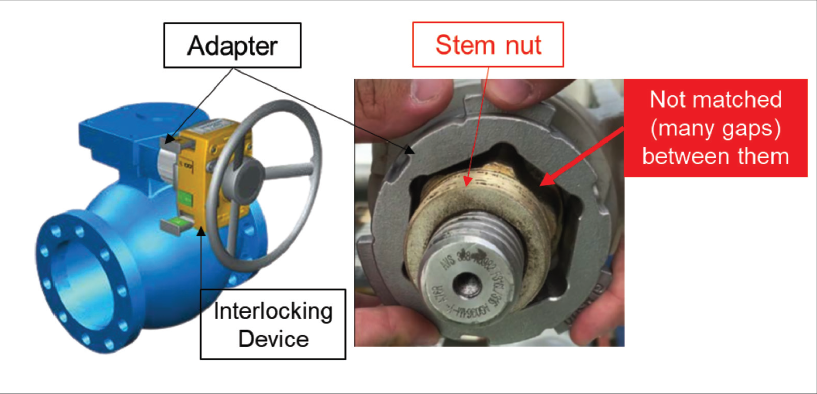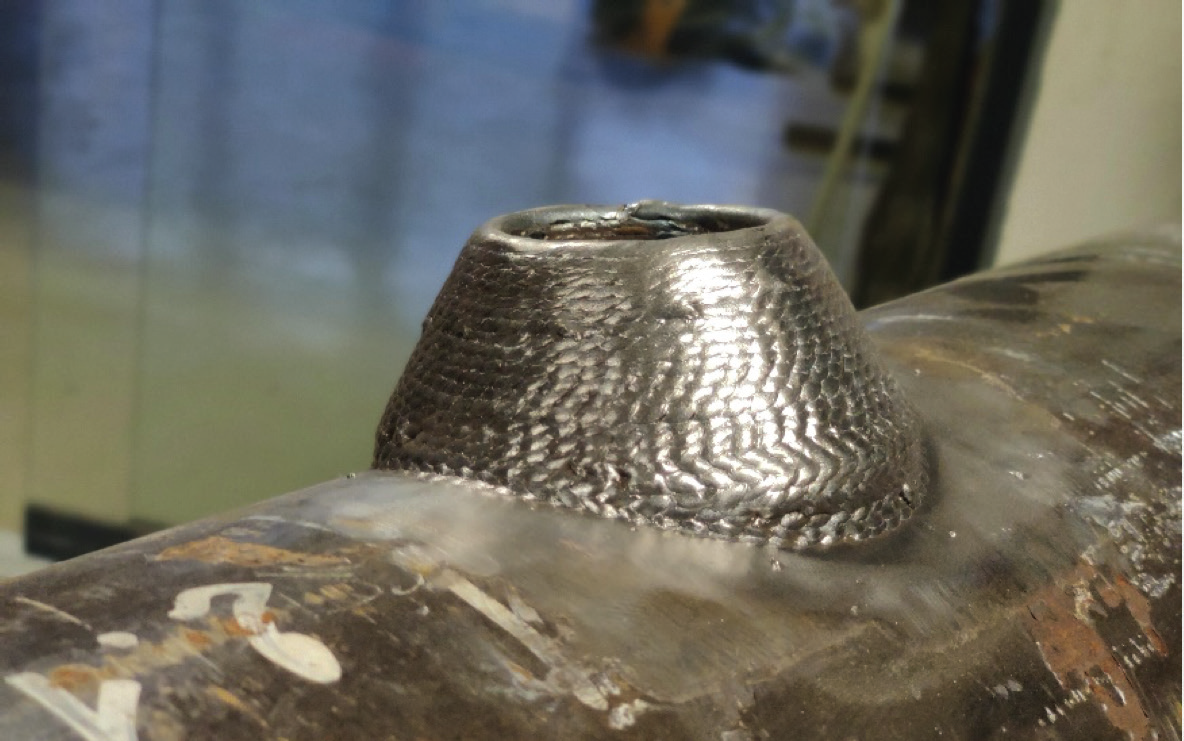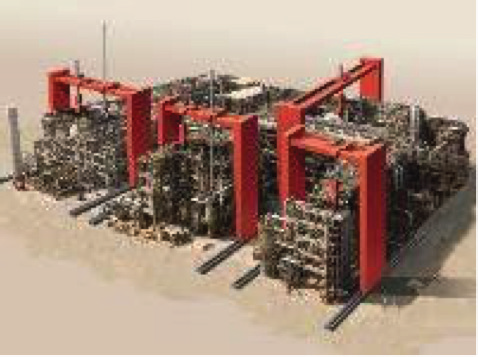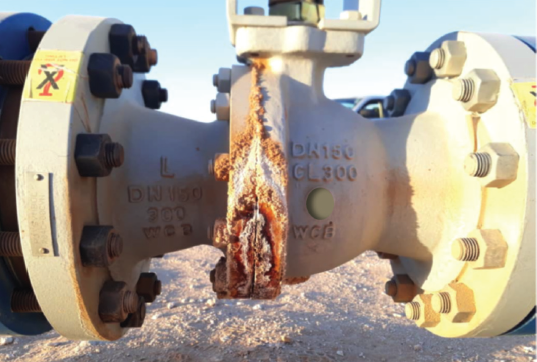In this article, JGC addresses the challenges surrounding valve interlocking devices, highlight discrepancies between components and the need for collaborative solutions. In addition, the burgeoning demand for 3D printing in construction if explored, offering a solution to labor shortages and quality concerns.
By Tatsuya Tobe – JGC Corporation
In the realm of valve engineering, precision and reliability are paramount. However, it is not without its challenges. From mismatched components to com- plex procurement processes, the industry faces hurdles that demand creative solutions. This article examines the intricacies of valve operations, the transformative potential of 3D printing in construction, and the quest for standardization within the framework of JIP33.
Findings: Pain Points of Valves with Interlocking Devices
Valves with interlock devices are important to perform valve open and close sequences properly. It was concluded that valve stem nuts and adaptors were not matched at the construction site. Adaptors were made by interlocking device vendors to match the valve stem nuts as per the valve vendor drawings. However, the drawings and actual stem nut dimensions were different (see Figure 1). Now, newer improvements are expected from the EPC side. For example, valve stem nut dimension checks for all valves at a factory regardless of whether some valves are used for interlock devices or not. This is a traditional method and may not be practical for valve vendors. For future improvements, a 3D scanner will be used to measure the actual valve stem nut dimensions. The adaptors will be made by 3D printing to match with the actual valve stem nuts at the construction site by EPCs. There are several opportunities to prevent the reoccurring pain points. The collaboration between EPCs, valve vendors, and interlock device vendors is important for new improvements

3D printing is a relatively new demand. While there are many workers at the construction site, there is a shortage of skilled workers. Furthermore, workers make things manually. Each worker’s skill and the quality of their work may not be the same. Therefore, there is a risk in the quality of handmade work. Hence, there is an acceleration in the use of 3D printing for concrete foundation work (see Figure 2). 3D printing is also being applied for metal piping components using WAAM (Wire and Arc-based Additive Manufacturing) technology (see Figure 3).
Generally, 3D printing has several potential merits in terms of reducing lead time, ensuring consistent quality, allowing for flexible design, and protecting workers. For example, piping spools require many construction steps such as cutting and welding. When 3D printing is used, these steps could be drastically reduced. When using large-scale 3D printing to make equipment and structures (see Figure 4), saving workers could be achieved. From a vendor’s perspective, vendors manufacture products at their factories. After the manufacturing is completed, these products are shipped during a one to two month period. This manufacturing process, including shipment, is repeated. Therefore, the shipping process must be considered in the EPC schedule.
In the future, when products are manufactured by 3D printing, the 3D data could be sent directly to the construction site. Therefore, the shipping period may not be necessary. However, not all manufacturing methods will be completely changed to 3D printing. The expectation is that the combination of vendor manufacturing and 3D data sent to the construction site will be crucial in the future to reduce the lead time of products.
From the end user’s point of view, they have started using 3D printing for several parts in timely maintenance due to supply chain considerations. End users also require pressure vessels manufactured by 3D printing. The EPC side needs to respond to the end user. From the EPC side, 3D printing is about understanding the other side. For the actual use of 3D printing in each project, the recognition by end users, EPC contractors, and vendors, is very important to successfully execute the project on schedule. For 3D printing, further collaboration is important, as 3D printing is in increased demand.


New Challenges: Standardizing Identification Codes in JIP33
JIPP33, one of Joint Industry Program in the IOGP, is to create the standardizing procurement specifications. Before JIP33, there were many different specifications varying project by project, and repeated vendor technical bid evaluations using the different specifications. Vendors make a unique product to meet a unique project requirement. This may be an inefficient approach for end users, EPCs, and vendors. After JIP33, there are standardized procurement specifications regardless of the project. There are no more specifications project by project and end user by end user. This may be an efficient approach for all parties.
For manual valves, there are standardized procurement specifications for both gate and ball valves in JIP33. Gate and ball valves can be called bulk valves. In this case, bulk valves mean valves with the same design. Imagine how many bulk valves will be purchased in one PJ. Normally around 10,000 bulk valves will be purchased, however they will not be the exact same. Depending on valve type, size, and rating, the number of bulk valves is different. They will not be purchased one at a time; the purchasing will be done step by step such as a first purchase order, and second purchase order depending on the EPC schedule. Bulk valve purchasing is therefore complicated to manage for EPCs and vendors.
To improve this situation, and for far more effective use of JIP33, there needs to be one more function for real procurement and management. This could be a Standardizing Identification Code (Standard ID) (see Figure 5). The purchase specifications are becoming standardized, however not the IDs. This may be inefficient for real procurement with JIP33. EPCs would like to propose a standard ID for bulk valves in JIP33. A Standard ID would be a uniform code for all projects. Some valves will have the same Standard IDs. Then, each bulk valve could be managed by a Standard ID. It is expected that all bulk valves as per JIP33 standardizing procurement specifications could be linked by standard ID. Standard ID would be marked on the actual bulk valves. One can still see real JIP33 valves with Standard ID. The proposal is still only a concept. The next step is to ask questions, such as: what is the algorithm? How does this fit for vendors? How much effort is required? This remains because of end-users, EPCS, and vendors for the valve industry.


This may be the beginning of a tremendous challenge, but the efficiencies through standardization will be a demand in the oil & gas industry in general. Therefore, standard ID could be on trend. Standard ID has a potential to apply to other bulk materials, such as pipes, fittings, and flanges. Generally bulk materials are simple but huge qualities. Tobe believes that standard ID for bulk materials could be an important factor in purchasing and managing the future. To achieve this, communication with end users, EPCs, and vendors is an important key point. Tobe would like to collaborate with IOGP/JIP33 from the EPC side. Standard ID is their new challenge.
Message to Vendors: Reliability is Quality Plus Close Communication
EPCs have faced valve leakage from body connectors during plant operation (see Figure 6). When faced with valve troubles, what are the important points? It is communication with vendors, as the problem must be solved as soon as possible. At first, we communicated with vendors for the root cause study. And repair procedure was prepared by vendors and reviewed by us. The vendor sent new body connector gaskets to the plant. The valves were repaired as per the vendor’s repair procedure. The valves were reinstalled properly, and therefore the problem was completely solved. Quality is always a priority. When faced with trouble, close communication is required to maintain reliability with end users, EPCs, and vendors.




